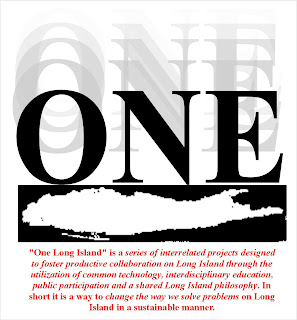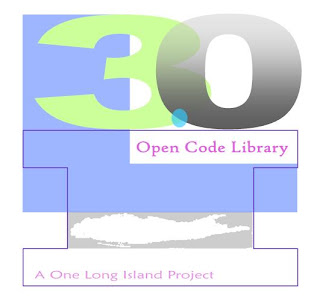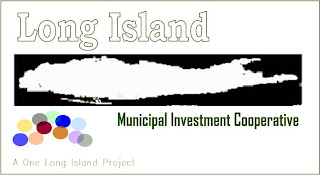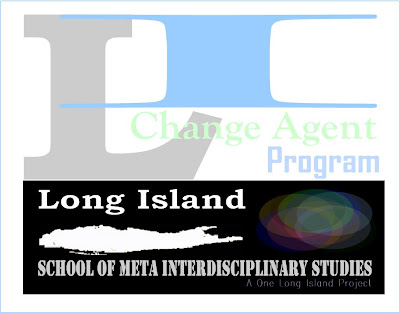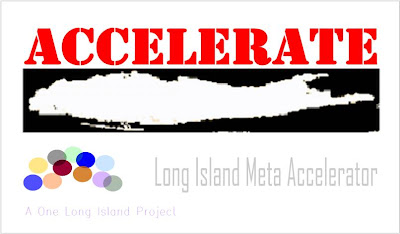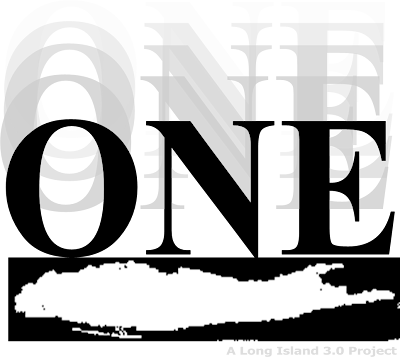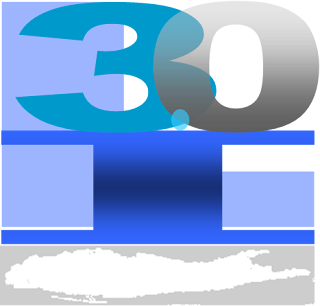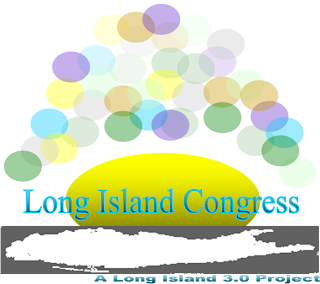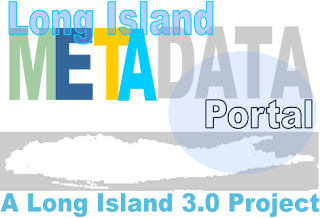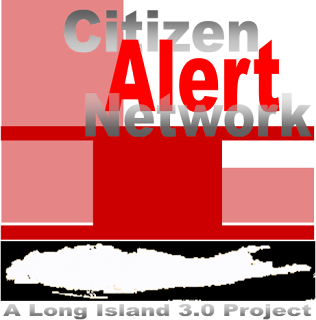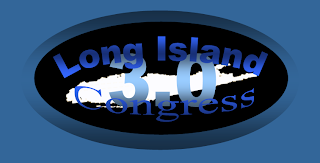Friday, August 31, 2007
Life Imitates Mathematics
Which led me to think that if we on Long Island can create the right set of circumstances for positive change, positive change will not only occur but remain "self organized" and "self renewing."
Not that we are remotely in the same league as Benoit Mandelbrot but what we are proposing with Long Island 3.o, the Long Island Congress, the Long Island Constitution and Long Island Meta-democracy is similar to this concept.
"A body in motion tends to stay in motion unless acted on by an outside force"
If we can construct a set of circumstances on Long Island for positive change, then the positive change should continue unless interrupted by something highly unusual since, if done properly, Long Island 3.o should be pretty well protected from the run-of-the-mill "outside forces."
Monday, August 27, 2007
Nice to see ...
Thursday, August 23, 2007
Long Island as a Meta-Democracy: Part One
Wednesday, August 22, 2007
Modular Long Island ...

By way of review, a significant part of our Long Island 3.0 project requires us to use as many "open standards" as possible so as to accelerate our ability to communicate clearly and with purpose.
Tuesday, August 21, 2007
A good model for the Long Island Congress?
- As a service organization, CCRL is committed to helping its primary customers, collaborative regional organizations, to achieve their fullest potential success in improving the economy, environment, and social equity of their regions. CCRL must always strive to understand clearly their needs and wants, and to deliver high-quality direct support, whether through information and other resources, technical assistance, training, brokering, or promotion.
- As a constituency-based organization, CCRL is committed to representing the interests of the network of regional collaboratives with the public sector, particularly the state government, and with other public interest organizations. In general, this involves advancing new policies and programs that support the goals and strategies of the regional organizations.
- As a leadership organization, CCRL is committed to the generation and promotion of new ideas, strategies, policies, and programs that will challenge the thinking and actions of the CRI network, and ourselves so that we might continue to learn and to improve our effectiveness.
- CCRL is committed to collaboration, inclusion, innovation, boundary crossing, accountability, and continuous improvement."
Monday, August 20, 2007
Just another way to look at Long Island 3.0 ...

 Click for larger image.
Click for larger image.How far into the future can we reasonably plan?

"Language, actually, was developed in response to these tools--writing, too. My point is that the key technology that runs through all of this is communications. Humans, in essence, are a communicating organism. We started as a very dispersed species, became more organized in cities, and then came mass communications. The invention of the printing press brought books to large populations. Then, in this century, radio and television completely changed the psychology and social setting of most of the world's people."
Friday, August 17, 2007
Creating a "Virtual" Long Island Constitution: Part Three
 A simple graphic to illustrate the new Long Island "triad."
A simple graphic to illustrate the new Long Island "triad."Thursday, August 16, 2007
Creating a "Virtual" Long Island Constitution: Part Two

We should view the "Virtual" Long Island Constitution as a hybrid creation. Part legal, part ethical, part technical: organic, dynamic, reality based.
Tuesday, August 14, 2007
Creating a "Virtual" Long Island Constitution: Part One
Monday, August 13, 2007
Thinking About Long Island

Friday, August 10, 2007
Thursday, August 9, 2007
Long Island Congress: Breaking the Cycle of Stagnation
Wednesday, August 8, 2007
Insourcing?

Tuesday, August 7, 2007
Simple. Not Simplistic.
Monday, August 6, 2007
Baldrige Program: A useful idea for the Long Island Congress?

Baldrige and Local Government: Isn't This a Private Sector Program?
"Although the Baldrige program began as a way for American business to compete more effectively around the world, the framework was developed to promote quality and excellence, not simply to drive profits. The seven criteria form a set of values and core concepts that any organization—public or private—can use to its advantage.
Public school systems, colleges, health care organizations, and numerous service businesses have won Baldrige awards. There is no reason to believe that cities and counties would not benefit from the framework and the rigor associated with the process. In fact, it is probably more accurate to say that local government has a lot of catching up to do if it wishes to be compared with the best Baldrige organizations, regardless of sector.
Baldrige for government can work because the seven criteria are built on a set of interrelated core concepts and values that promote organizational excellence. Here are brief descriptions of the core values and concepts that underpin the Baldrige model.
Visionary leadership. The management team should serve as role models through ethical behavior and personal involvement in coaching and developing future leaders. Both strategy and customer/citizen goals need to be aligned. Commitment and initiative are built throughout the organization.
Customer-driven excellence. Customer- or citizen-driven excellence is a strategic concept. It is devoted to obtaining and retaining citizen support as well as maximizing competitive position. It is critical to understand and develop citizen-focused outcomes.
Organizational and personal learning. Learning results in a more satisfied and versatile employees who stay with the organization. Bright, innovative employees provide a distinct advantage in meeting the needs of the community.
Valuing employees and partners. An organization’s success depends increasingly on the diverse backgrounds, knowledge, skills, creativity, and motivation of all its employees and partners, including both paid staff and volunteers.
Agility. A capacity for rapid change and flexibility is a key to success. Organizations face ever-shorter cycles for introducing new or improved programs and services as well for meeting expectations to deliver them more rapidly.
Focus on the future. Creating a sustainable organization requires under-standing the short- and long-term factors that affect the organization and its environment. Developing employees and partners along with creating opportunities for innovation are key concerns.
Managing for innovation. Making meaningful change improves your services, programs, processes, and operations to create new value for the organization’s stakeholders. Innovation builds on the accumulated knowledge of your organization and staff.
Management by fact. An effective administrative management system depends on the measurement and analysis of performance. If you can’t measure it, you can’t manage it. Selecting key performance measures and indicators is critical.
Social responsibility. An organization'€™s leaders should stress responsibilities to the public, ethical behavior, and the need to foster improved communities. Organizations should not only meet regulatory requirements, but treat those requirements as opportunities for improvement beyond mere compliance.
Focus on results and creating value. An organization’s performance measures need to focus on key results. Results should be used to create and balance value for your key stakeholders—customers, staff, the community, vendors, partners, and the general public.
Systems perspective. The Baldrige criteria provide a systems perspective for managing your organization and its key processes to achieve results in the form of performance excellence. The seven Baldrige categories and the core values form the building blocks and the integrating mechanism for the system. Successful management of overall performance requires organization-specific synthesis, alignment, and integration."
Long Island Supply Chain Project?

How about a Long Island Supply Chain Project?

Friday, August 3, 2007
Dynamic Media Reformulation: Part Two
 Preliminary conceptual chart (click for larger image).
Preliminary conceptual chart (click for larger image).Thursday, August 2, 2007
Dynamic Media Reformulation: Part One
Wednesday, August 1, 2007
Essential reading ...
 Just back from England and Wales. Read The World is Flat (Version 3.0) by Friedman along the way.
Just back from England and Wales. Read The World is Flat (Version 3.0) by Friedman along the way. 


